September 18, 2020
Join us for these short, thirty-minute talks featuring different archaeologists discussing a variety of archaeological topics. The talks are free, but registration is required. Most lectures will be recorded and available via the links below.
For information about Archaeology Abridged Premium, click here.
Heather McKillop
Discovery! Ancient Maya Wooden Buildings underwater in Belize
Thursday, April 7, 1:00 pm ET on Zoom (Register here)
Classic Maya salt workers constructed salt kitchens and residences along the shores of a coastal lagoon that were subsequently submerged below sea level. In this talk, McKillop will describe the discovery, mapping, and excavation of wooden buildings and artifacts that were spectacularly preserved below the sea floor in red mangrove peat. Wood normally decays in the tropical landscape of Central America where Maya sites are dominated by stone buildings, so the findings of pole and thatch buildings at the Paynes Creek Salt Works are significant to understanding more modest buildings that likely were common. Field techniques were modified to survey and excavation of shallow underwater sites, including floating on Research Flotation Devices (RFDs) and diving using the airline system of hoses from a gas-powered compressor.
Preserving Underwater Maya Finds using 3D technology
Thursday, May 19, 1:00 pm ET on Zoom (Registration link coming soon)
Waterlogged wooden building posts and artifacts, including the K’ak’ Naab’ canoe paddle, presented a conservation nightmare when removed from the water for study. If allowed to dry, the wood shrunk, cracked, and decayed, not good for study or preserving long-term for exhibit in the case of the canoe paddle. The solution was to create 3D digital replicas of waterlogged wood, with some objects professionally conserved and others curated in deep silt in the lagoon. In this talk McKillop will describe setting up the DIVA Lab (Digital Imaging and Visualization in Archaeology), 3D digital imaging research-quality replicas of the underwater material. She will also discuss 3D printed replicas for exhibits in Belize funded by an AIA Site Preservation Grant.
Dr. Heather McKillop is the Thomas & Lillian Landrum Alumni Professor in the Department of Geography and Anthropology at Louisiana State University, Baton Rouge. She is a 2020 recipient of the Research Master Award in the Humanities and Social Sciences at Louisiana State University. She earned her B.Sc. and M.A. in Anthropology at Trent University (Canada) and her Ph.D. at the University of California, Santa Barbara. She has carried out fieldwork on the coast of Belize since 1979, focusing on the ancient Maya economy. She has focused on the Paynes Creek Salt Works, Belize since the 2004 discovery of the only known ancient Maya canoe paddle and wooden buildings preserved in mangrove peat below the sea floor. Survey in a coastal lagoon includes discovery, mapping, and excavation of wooden buildings and associated artifacts, with funding from the National Science Foundation and teams of students and collaborators. She is interested in how salt was produced and labor organized to supply the biological needs of the nearby inland Maya for this scarce commodity. She has published many journal articles and books, including Maya Salt Works (2019), In Search of Maya Sea Traders (2005), Salt: White Gold of the Ancient Maya (2002), The Ancient Maya (2004), and Coastal Maya Trade (with co-editor Paul F. Healy). She was interviewed on NPR’s Science Friday about her article with Kazuo Aoyama in Proceedings of the National Academy of Science. Her current National Science Foundation grant with E. Cory Sills includes excavation of multiple buildings at large underwater sites to identify salt kitchens, residences, and the organization of production (see 2021 article in Ancient Mesoamerica “Living and Working at the Ek Way Nal Salt Works, Belize”).
Kate Liszka
Forts, Prisons, or Rudimentary Vaults? The Three so-called “Fortresses” of Pharaoh at Wadi el-Hudi and their Connection to Amethyst Mining
Thursday, February 17, 1:00 pm ET on Zoom (Watch recording)
Acquiring amethyst in Ancient Egypt was a tricky business. But the cut raw amethyst, the amethyst mines, and the people in the desert all needed to be guarded. As part of the mining procurement process, the Egyptians created massive stone settlements and networks of guard posts in the desert. The settlements have often been compared to contemporary Egyptian forts in the Nile Valley, and the ones in the desert were supposedly built to protect from oncoming armies. Liszka directs the Wadi el-Hudi Expedition whose team has been investigating these structures in the Eastern Desert since 2014. In this talk, she will share recent archaeological work from the Wadi el-Hudi region in the Eastern Desert in order to scrutinize the location, design, and use of these so-called “forts” and address the purpose of their construction. The talk will also investigate how the Egyptians protected these assets and expeditions with hundreds of soldiers, connecting roads, and watch posts strategically placed across the desert.
This lecture will also be available in American Sign Language. ASL interpretation will be provided by Trail Blazing Interpreters. Due to Zoom limitations on mobile devices and tablets, participants interested in accessing ASL interpretation should log in using the desktop version of Zoom.
Operation Amethyst: How Egyptian Kings and Queens got their Bling 4,000 years ago
Thursday, January 20, 1:00 pm ET on Zoom (Watch Recording)
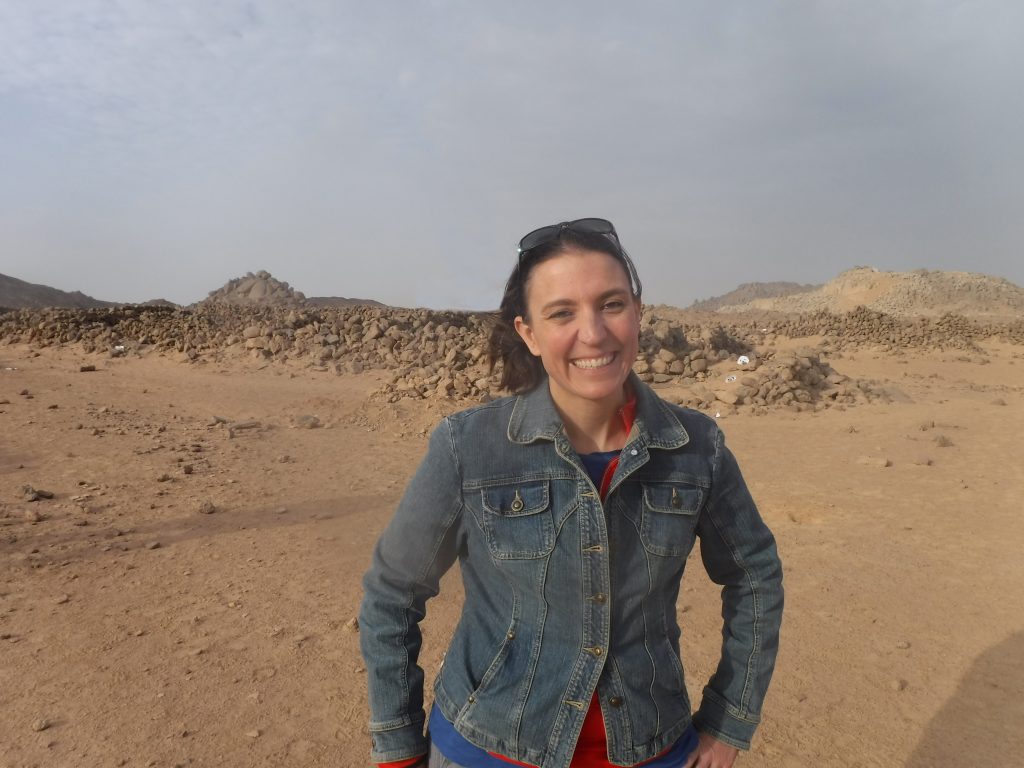
Some of the most stunning jewelry from Ancient Egypt is made of amethyst. Its craftsmanship, opulence, and design epitomize quality in the ancient world. Yet the skill in making this jewelry started long before the cutting and buffing of the raw stone. Procuring amethyst in the Eastern Desert is fraught with many more perils and problems than Nile Valley craftsmen experienced. As the Director of the Wadi el-Hudi Expedition to the Eastern Desert, Liszka leads a team that has studied the remains of these ancient desert expeditions and a team who has firsthand experience of many of the perils that the ancient explorers would have fought as well. This talk examines the extremes and dangers that thousands of Ancient Egyptians went to in order to acquire these beautiful purple stones for the Pharaoh’s jewels. By investigating the archaeology, art, and inscriptions from Wadi el-Hudi in the Egyptian Eastern Desert, we navigate through the whole process of amethyst acquisition: from finding, to mining, and surviving in the dangers of the desert.
Dr. Kate Liszka is the Benson and Pamela Harer Fellow in Egyptology and Associate Professor of History at California State University San Bernardino. She earned her doctorate at the University of Pennsylvania and from 2012 to 2015 was a Cotsen Postdoctoral Fellow and Lecturer at Princeton University. Her areas of specialization include Nubians in Egypt, the Medjay, ethnicity and identity in Antiquity, multicultural Interactions in frontier regions, the Pangrave Archaeological Culture, and large-scale mining expeditions in Antiquity. Dr. Liszka is the Director of the Wadi el-Hudi Expedition in the Egyptian Eastern Desert.
Monica Smith
Indian Cuisine, Past and Present
Thursday, October 14, 1:00 pm ET on Zoom (Watch Recording)
Today, Indian cuisine is a global favorite, anchored through a diaspora of restaurants in small towns and urban centers alike. But did you know that a hankering for the flavors of the subcontinent goes back thousands of years? The Romans imported pepper from India by the sackful, and even earlier than that, the ancient Bronze Age culture of the Indus started the combinations of ginger, turmeric, and other spices that we recognize as “curry.” Bring your appetite for a lunchtime discussion of the ingredients, history, and archaeology of the subcontinent’s wonderful palette of foods.
The Secrets of an Ancient Indian City
Thursday, September 16, 1:00 pm ET on Zoom (Watch Recording)
The Indian subcontinent is home to a number of the world’s great civilizations and religious traditions. About two and a half thousand years ago, a tremendous synergy of urbanism, rulership, writing systems, and the advent of Buddhism and Jainism was expressed in hundreds of archaeological sites. Among these was the magnificent city of Sisupalgarh on India’s eastern coast, where an international team of researchers from the University of California and Deccan College have focused their efforts to learn about the monumental architecture and daily lives of a thriving ancient metropolis. Tune in to learn about how archaeologists see under the surface without digging, how a fortification wall isn’t just for defense, and why a little “bling” explains the irresistible pull of urbanism past and present.
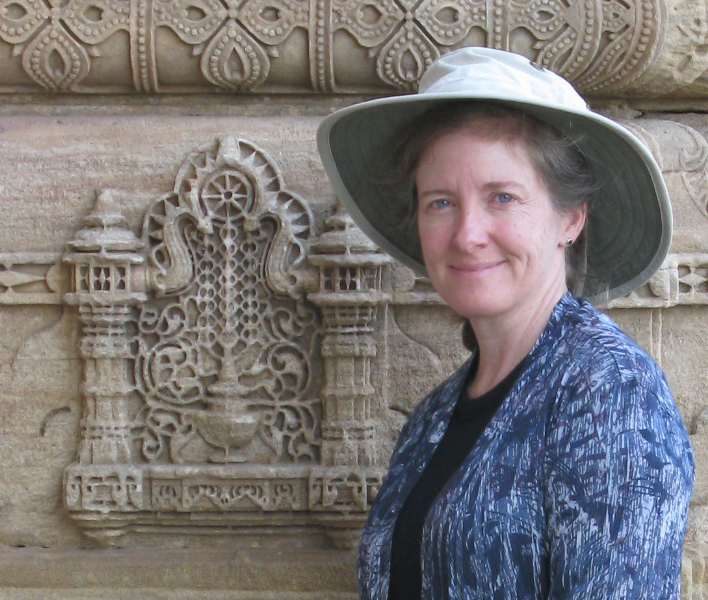
Monica L. Smith is Professor in the Department of Anthropology and Professor in the Institute of the Environment and Sustainability at the University of California, Los Angeles. She holds the Navin and Pratima Doshi Chair in Indian Studies and is the director of the South Asian Archaeology Laboratory at the Cotsen Institute of Archaeology. She received her B.A. in Classical Civilizations (ancient Rome and Greece) at the University of California, Santa Barbara; M.A. in Archaeology from UCLA; and Ph.D. in Anthropology from the University of Michigan. Her field experience includes participation on projects in England, India, Italy, Egypt, Madagascar, Bangladesh, Tunisia, and with the National Park Service in the American Southwest. With her colleague R.K. Mohanty she has co-directed a long-running archaeological research project in eastern India at the sites of Sisupalgarh, Talapada and Ostapur and their environs, supported by funding from the U.S. National Science Foundation, the National Geographic Society, the Wenner-Gren Foundation for Anthropological Research, and the American Institute of Indian Studies. Her books include Cities: The First 6,000 Years; A Prehistory of Ordinary People; and with R.K. Mohanty, Excavations at Sisupalgarh. She is in her third term as an Academic Trustee on the AIA’s Governing Board.
Martin Carver
Interpreting Sutton Hoo
Thursday, June 24, 1:00 pm ET on Zoom (Watch Recording)
Each generation that encounters the Sutton Hoo Story sees it as if for the first time. At first it was a treasure, then it was an illustration of early kings and just lately it has become a window on England’s early years. There are now three cemeteries at Sutton Hoo, the first of a sixth-century wealthy family, the second a group of seventh century nation-builders celebrated in burial mounds and the last the sad disposal of eighth to tenth century execution victims, probably those who failed to conform to the new regime. These three cemeteries illuminate a changing world, provide us with new history. But they also reveal something of the actors, what they were expressing, the references they made to other countries, what they were thinking.
Martin Carver reinterprets the meaning of the great ship burial and the other burials made before and after it at Sutton Hoo, explores the connections its people had with the development of the kingdom of East Anglia, with Britain, Scandinavia, Europe and the Mediterranean. In pursuit of parallels with mound building and state building, as a coda, he pays a visit to Japan and the USA.
Discovering Sutton Hoo
Thursday, May 13, 1:00 pm ET on Zoom (Watch Recording)
Sutton Hoo in Eastern England is a famous archaeological site – but one that never sits still; it changes with the years. Rediscovered in 1938 by Basil Brown and Mrs. Pretty, it gave us the great ship burial under Mound 1 with its incomparable treasure. In 1945-1983 British Museum scholars led by Rupert Bruce-Mitford reassembled the finds and studied them, returning to the site to look for anything they may have missed. From 1983-2005 there was a new campaign sponsored by the British Museum, the Society of Antiquaries and the BBC. Their mission: to give the site its context. What was a ship burial doing in seventh Suffolk: Why that? Why there? Why then?
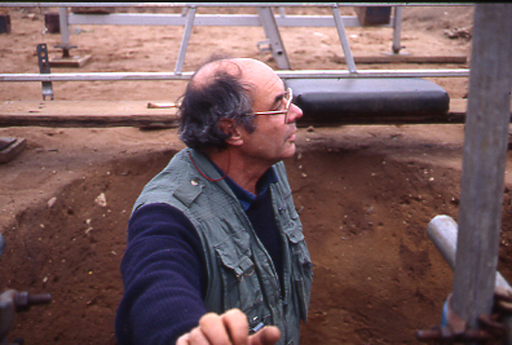
Martin Carver, who directed the latest of the campaigns, describes what we know about Sutton Hoo today.
Martin Carver was a late-comer to archaeology, having spent 14 years as an officer in the British Army and 12 as a free lance archaeologist before being appointed to the chair at the University of York, where he is now an emeritus. He has undertaken research expeditions in England, Scotland, France, Italy and Algeria, and is currently directing a European Research Council project Sicily in Transition: the archaeology of regime change (SICTRANSIT for short) with Alessandra Molinari (Rome) and Girolamo Fiorentino (Lecce). He lives in Ellerton East Yorkshire with Madeleine Hummler, archaeologist, editor and translator.
Professor Kathleen Lynch
Archaeological Pottery: From Trench to Ancient Table Thursday, March 11, 2021, 1:00pm ET on Zoom (Watch Recording)
What could a future archaeologist learn about you from the things in your kitchen cabinets? Broken pottery is the most frequently found artifact on most excavations, and pottery specialists aim to answer that same question about ancient people. This introduction to the world of ancient Greek pottery from archaeological excavations will explore the many different ways that ancient pottery can bring the past to life. Beyond giving us dates for archaeological features, pottery provides glimpses into ancient life of a broad spectrum of society. The pots are, in fact, reflections of people, their values, and their worldview, and apparently they were very thirsty! The talk will focus on pottery from Archaic and Classical Athens excavated by the American School of Classical Studies at Athens at the Excavations of the Athenian Agora.
A Toast to Ancient Greek Wine Drinking
Thursday, April 15, 2021, 1:00pm ET on Zoom (Watch Recording)
The ancient Greeks took their wine drinking seriously. The symposium was a drinking party for men with rules and expectations. They kept the group small so that all could participate in a single conversation, and the wine flowed, but watered down so that the drinkers stood on the edge of tipsy and drunk. Naturally, a formal drinking event needed special equipment, and in fact the symposium inspired the creation of the majority of ancient Greek pottery shapes. We will consider the importance of a “set” of pottery, its decoration, and the role this peculiar group drinking event played in the social life of ancient Athens. We will peer into the cupboards of a late Archaic house from downtown Athens to see the symposium in action. Feel free to bring a glass of wine!
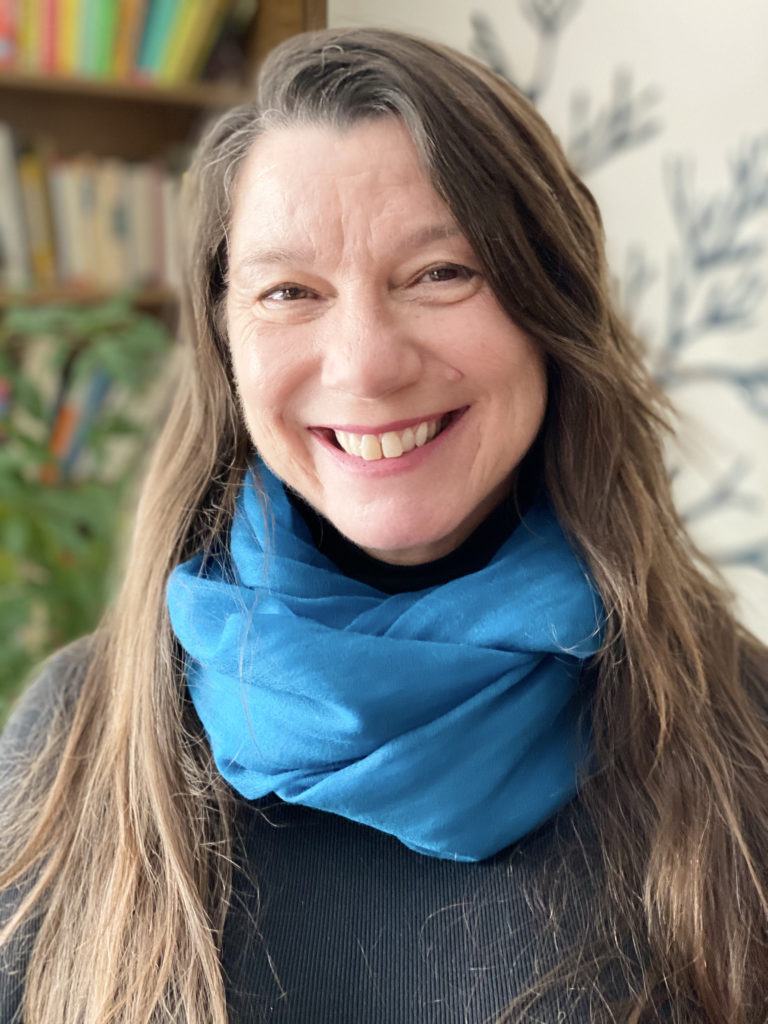
Kathleen M. Lynch is Professor of Classics at the University of Cincinnati and a classical archaeologist with a focus on ancient Greek ceramics. She earned her Ph.D. from the University of Virginia, and has worked on archaeological projects at sites in Greece (Athenian Agora, Olynthos, Corinth, Pylos), Turkey (Gordion, Troy), Italy (Morgantina), and Albania (Apollonia). Kathleen’s research considers what ancient ceramics can tell us about their use and users. Athenian figure decorated pottery from Athens is her specialty, and her book, The Symposium in Context (2011 ASCSA Publications), won the AIA’s 2013 James R. Wiseman Award for best publication in archaeology. It explores the kitchen cupboards of an Archaic Athenian house. At Cincinnati, Kathleen won a teaching award for her classes on mythology, Greek and Roman archaeology, and graduate seminars on topics such as Greek iconography, pottery analysis, and ancient art and art history. She has been a lecturer on the AIA’s national circuit for many years, has served the AIA at the national and local levels, and enjoys traveling with AIA tours as host and lecturer. She is a Fellow of the Society of Antiquaries. In her free time she enjoys knitting.
Dr. Elizabeth M. Greene
Living on the Edge: The Roman Frontier in Britain and the Site of Vindolanda Thursday, January 28, 2021, 1:00pm ET on Zoom (Watch Recording)
The Roman frontier in Britain is one of the most explored, excavated, and well-trod historic landscapes anywhere in the world and Dr. Elizabeth Greene has been part of this exploration for almost twenty years. This talk will first introduce you to the spectacular landscape of the Hadrian’s Wall corridor and then zoom in on the extraordinary site of Vindolanda in the central sector of this region. From its unparalleled architectural remains of the Roman fort and settlement to the amazing archaeological finds unearthed below, the site of Vindolanda displays vividly the lives of ordinary people living on the edge of the Roman empire nearly two thousand years ago.
In the Footsteps of Roman Soldiers: The Extraordinary Archaeological Finds from Roman Vindolanda Thursday, February 11, 2021, 1:00pm ET on Zoom (Watch Recording)
Since modern excavations began in the 1960s, the site of Vindolanda on Hadrian’s Wall has revealed some of the most extraordinary and often unique archaeological finds from any Roman site. Dr. Elizabeth Greene has been a part of the team organized by the Vindolanda Trust researching the site for almost twenty years and will share some of the highlights of that research in this talk. Following on the first talk in this series on the site of Vindolanda and its frontier landscape within the region of Hadrian’s Wall, this talk will focus on Dr. Greene’s research on the objects and implements of daily life that help us understand the people who populated this site nearly two-thousand years ago. The presentation focuses on Dr. Greene’s work on the collection of thousands of archaeological shoes and leather objects from the site and contextualizes this material within the context of social change on a dynamic Roman frontier.
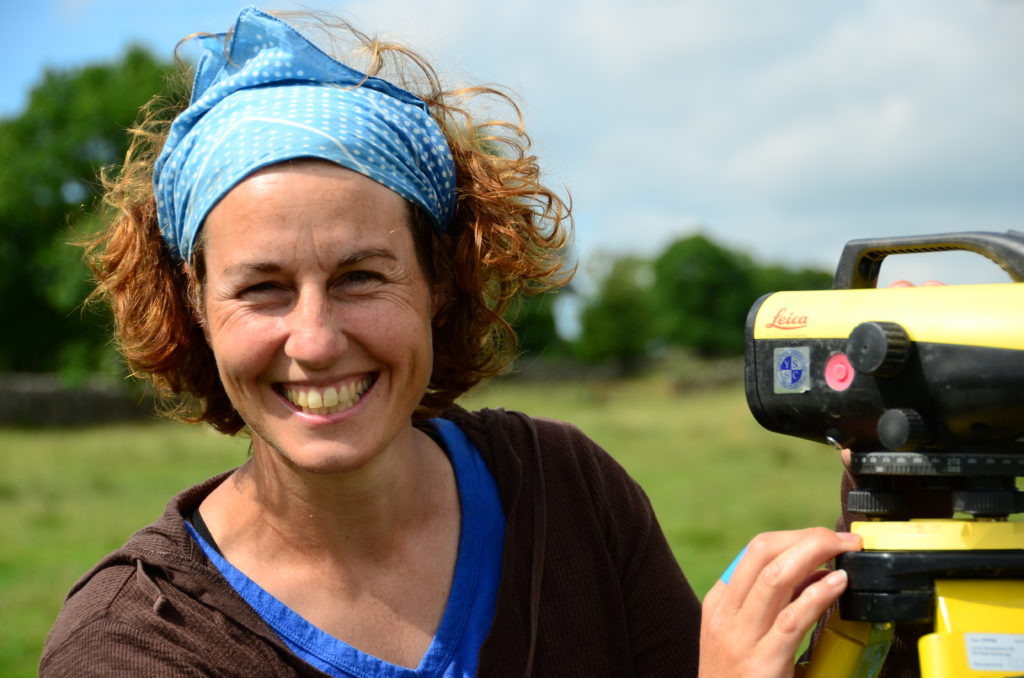
Dr. Elizabeth M. Greene is Canada Research Chair in Roman Archaeology and Associate Professor at the University of Western Ontario. She earned her PhD from the University of North Carolina, Chapel Hill, Department of Classics and has taught in the Classics Department at Western for 10 years. Her excavation and research specialize in the Roman provinces and frontiers, with particular focus on Roman Britain and the dynamic military communities that inhabited the frontiers of the northwest provinces. Dr. Greene has been part of the archaeological team at Vindolanda since 2002 and led the excavations in the North Field area of the site for a decade. She is currently the principal investigator of the Vindolanda Archaeological Leather Project and co-director of the Vindolanda Field School. Her research has been funded extensively by the Social Science and Humanities Research Council Canada and the Ontario Ministry of Research and Innovation. Her archaeological research has been published in international venues since 2012, much of which focuses on the social role of women, children and families in Roman military communities. Dr. Greene has been a national lecturer for the Archaeological Institute of America since 2014 and has given talks to local societies across the USA and Canada. She is also a member of the Royal Society of Canada’s College of New Scholars, Artists and Scientists and her research is regularly featured on podcasts, radio, online and print media. Dr. Greene has been a member of the AIA since graduate school and has advocated for archaeology and the AIA in several roles in both local societies and at the national level.
Dr. Patrick Hunt
The Fall of Civilizations: Famine & Climate Change
Thursday, September 24, 1pm ET on Zoom. (Watch Recording)
Dr. Hunt discusses how famine and climate change impacted past civilizations.
Otzi the Iceman’s Prehistoric Medical Kit
Thursday, October 22, 1pm ET on Zoom. (Watch Recording)
Dr. Hunt has studied Otzi for nearly three decades. Discover the contents of the Iceman’s prehistoric medical kit which included antiviral and antibacterial remedies.
Four New World Foods that Dramatically Changed European Lifestyles
Thursday, November 19, 1pm ET on Zoom. (Watch Recording)
Get in the holiday spirit by learning how four New World foods that changed European lifestyles after the 16th century: tomato, potato, corn, and everyone’s favorite – Chocolate!
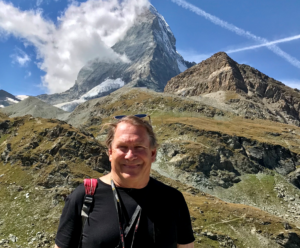
Dr. Patrick Hunt is an award-winning archaeologist, author, and National Geographic grantee. Dr. Hunt earned his Ph.D. in Archaeology from the Institute of Archaeology, University College London, and has taught at Stanford University for 25 years. He directed the Stanford Alpine Archaeology Project from 1994-2012, and has continued project-related fieldwork in the region in the years since. His Alps research has been sponsored by the National Geographic Society’s Expeditions Council. Patrick frequently lectures for National Geographic and others on Hannibal and the European mummy nicknamed Ötzi the Iceman. He is also a National Lecturer for the Archaeological Institute of America (AIA) as well as an elected Fellow of the Royal Geographical Society. Dr. Hunt is the author of 20 published books, including Hannibal (Simon & Schuster, 2017), the Penguin best-seller Ten Discoveries That Rewrote History, and Alpine Archaeology. He has also published more than 100 articles, including more than a dozen for Encyclopedia Britannica, mostly on Hannibal. Dr. Hunt has been featured in many National Geographic and NOVA documentaries, and has consulted for BBC and been featured in BBC radio interviews. He has a lifelong love of the Alps, having lived annually for several months in the Alps since 1994 when not in the classroom or on the lecture circuit. Dr. Hunt is also President of the Stanford Chapter of the AIA and has been a member of the AIA since graduate school in 1984. A regular study leader on educational tours, he led an AIA tour of northern Italy in 2017 and 2018 with another one scheduled for 2022.
Dr. Hunt will also be leading an AIA Tour in France in September 2022. For full details visit the France: The Reach Of The Romans tour web page.
Notifications